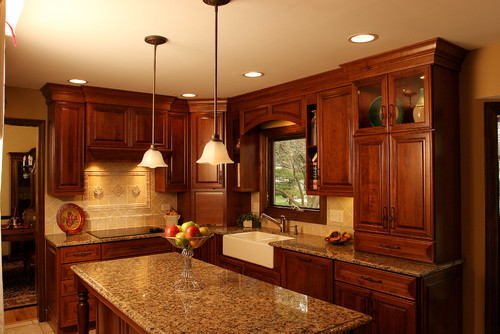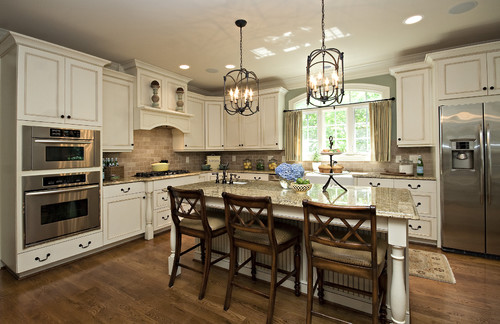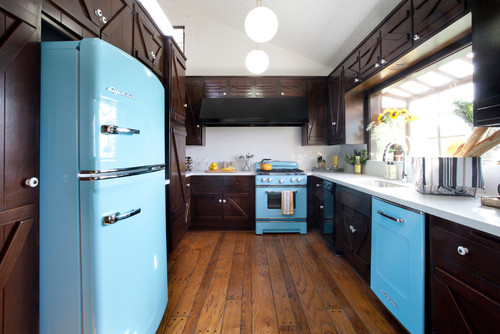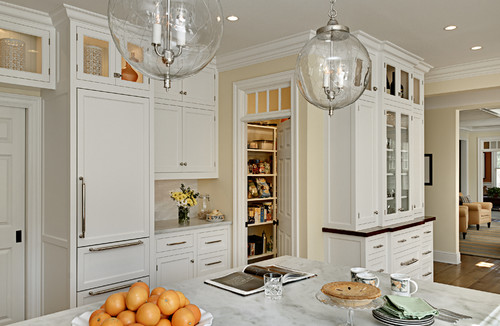Kitchen Design Mistakes That Make Your Space Look Outdated (and How to Fix Them)
January 3rd, 2025 | 10 min. read
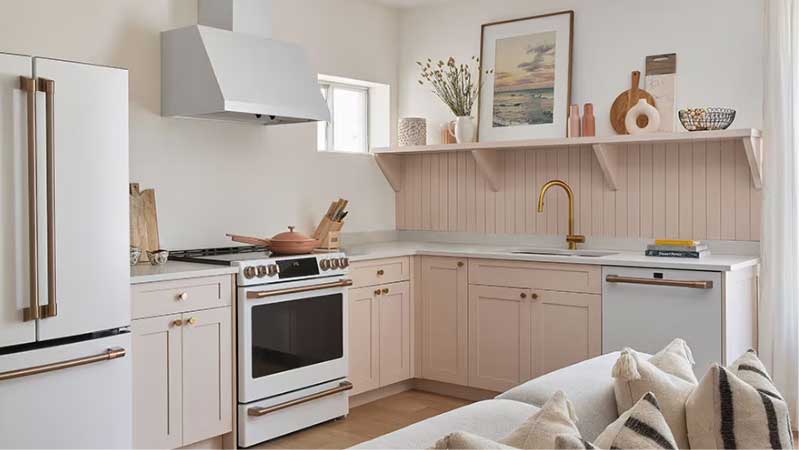
You’ve been meticulously planning your kitchen renovation, carefully selecting the perfect granite, cabinets, flooring, and appliances.
But now you’re wondering: Is this combination stylish—or already outdated?
Are you unknowingly buying the kitchen equivalent of shag carpeting paired with brown appliances?
(For the record, both are definitely out.)
I had the same concerns when I renovated my apartment in 2014 and rebuilt a brownstone in 2017.
Recently, I filmed a video with Mark Tobin, one of YouTube’s top kitchen designers, to discuss these concerns and share insights.
In this article, we’ll guide you through six common design mistakes to avoid and provide tips to ensure your kitchen looks fresh and timeless.
[inlineCTA]
Before You Read This Article
My ju-jitsu teacher is driving me nuts.
He wants to be a developer and just purchased his first tear-down in Newton, Massachusetts.
Every day, we talk about different styles.
Last month, he was sold on the blonde wood, white, and black-accented kitchens that have been incredibly popular lately.
Yesterday, he was convinced the dark oak look was the way to go.
The truth is, you probably can’t do both.
So, before you drive yourself crazy, ask yourself this one question:
What makes you happy? What style feels best for you?
Once you have your answer, stick with it.
Kitchen Design Mistakes That Make Your Space Look Outdated (and How to Fix Them)
Mark's 1st Dated Design Mistake to Avoid: Skip the Crown Molding
One of Mark's first points was a design element that might surprise some people: crown molding.
He admits this tip might ruffle a few feathers but assures us it's worth considering if you want a modern and timeless kitchen.
Crown molding has long been a go-to for kitchens, often associated with upscale or luxurious designs.
Mark emphasized that he's not saying crown molding is ugly - just that it can instantly make your kitchen look dated.
"Crown molding used to be the thing - the go-to everywhere," Mark explained.
"In one era, crown molding looked glorious, looked luxurious. It looked like your kitchen was upscale if you had crown molding. But today… lay off the crown molding. Go with something a little simpler and a little more modern."
If your style leans toward traditional designs—think French country or farmhouse—a bit of crown molding might fit the theme. (Note: I love crown molding in a traditional kitchen).
But for a kitchen that will stand the test of time, Mark suggests opting for cleaner lines, like a smaller trim.
These simpler options still add character without locking your kitchen into a specific decade.
Mark also highlighted the practical challenges of crown molding.
"Let's be honest—it's hard to finish it. It's hard to find a good craftsman who can do a nice crown molding."
Note: It is hard to find good deliverymen; the trades are even tougher.
Mark also pointed out the practical challenges of installing crown molding, particularly for DIYers.
"No offense if you're a DIYer," he said, "but you're gonna butcher those things." He explained that cutting crown molding to fit properly is notoriously tricky.
"Have you ever put crown molding in a miter box or a miter saw and tried to cut it?" Mark asked.
"You waste three feet before you get the cut in the right shape, and then you've gotta make it perfect. Your ceiling's not level."
His advice?
Skip the crown molding altogether. It simplifies your renovation process and gives your kitchen a fresh, updated look.
As Mark put it, "Save yourself from the frustration and make your kitchen look better."
While crown molding still exists in highly traditional designs, it's no longer a must-have for most kitchens.
If you aim for a clean and modern look, it's time to rethink this once-popular feature.
My 1st Dated Design Mistake to Avoid: Avoid Adding Color to Every Appliance
If you want to make your kitchen unique without risking a dated look, my advice is simple: Choose one standout appliance to showcase a pop of color.
It could be your refrigerator - brands like True offer amazing finishes - or your stove, often a natural focal point.
A single colorful piece can create a bold, modern statement without overwhelming the space.
But here's the catch: colorizing your entire kitchen?
That's an eventual dated game.
Your future self might not thank you, and here's why: it's expensive, it takes longer to source, and the look can quickly become overwhelming.
From Mark: I'll never forget one client who brought me a bright red broom handle from a dollar store.
She said, "I want my kitchen to be this color."
We made it happen, and her kitchen came in completely fire-engine red - cabinets, appliances, everything.

She loved it at the time, but I couldn't help but wonder: how long would that love last?
Back to me: Flashback 25 years: We designed a kitchen at Yale with fire-engine red cabinetry and Wolf appliances.
At first, it was a showstopper.
But we struggled to get rid of that kitchen.
The issue? It's just too much visual stimulation.
If you're considering bold colors for your kitchen, proceed with caution.
Think about how long you plan to stay in your home, how the color will age, and the potential impact on resale value.
There's nothing wrong with loving a bright kitchen—just make sure it's a love that will last.
And here's a tip: take a good look at photos of kitchens with bold color schemes.
Some styles are timeless, while others feel tied to a specific moment or region.
You don't want your kitchen to scream a particular trend like orange - or, as I joked, to look like it belongs in Texas or Tennessee (no offense to those states).

A pop of color? Absolutely. A whole kitchen of color? Be careful. Sometimes, less is more.
Mark's 2nd Dated Design Mistake to Avoid: Rethink Shaker-Style Cabinets
Mark's second tip might come as a surprise to many homeowners: It's time to move on from shaker doors.
While shaker-style cabinet doors have been popular for years, he believes their time has passed.
"Shaker-style doors have been so popular for so long," Mark said.
"I'm not saying that these are ugly things. I'm just saying that I think these things date your kitchen. ... It's the default for stock cabinets now. You go to Home Depot or someplace where [you] buy stock cabinets. It's the default door. You see it everywhere."
The widespread use of shaker doors has led to oversaturation, leaving many homeowners asking, "What's next?"
Mark noted that while traditional raised-panel or cathedral-style doors aren't likely to return, there's a growing interest in exploring new, unique door styles.
Mark suggested several options for homeowners who want a modern yet distinctive look:
- Thin-Line Shaker Doors: A slimmer take on the classic shaker design, with narrower stiles and rails for a sleeker appearance.
- Beaded or Fluted Doors: These add texture and visual interest without being overpowering.
- Molded One-Piece Doors: A minimalist option with clean lines and a streamlined feel.
However, Mark acknowledged that some of these designs might come with a higher price tag or longer lead times, as they're not typically available as stock options.
"They're a little more risky," he said.
Mark even admitted that his kitchen features shaker doors, but he feels they could be more exciting.
"As I look at my kitchen, I think it's kinda boring. Choosing a different door style could be a lot more interesting."
Although many still consider shaker kitchens current and contemporary, Mark believes the trend has passed.
"The shaker kitchen, although it's pretty current and temporary of a look, I think it's kind of over that point now," he said.
"It's becoming a little bit like, we're done with that. Let's move on. We need something a little more interesting for our kitchens."
Whether you're renovating or building from scratch, this tip is worth considering.
A thoughtful, unique door style could be the key to creating a fresh and forward-thinking kitchen for years to come.
My 2nd Dated Design Mistake to Avoid: Adding Wrong Ventilation
If there's one appliance that can instantly date a kitchen, it's the vent.
Ventilation is a crucial part of any kitchen, yet it's often overlooked or poorly executed - and when it's done wrong, it's hard to ignore.
Let's talk about downdraft vents.

If you're planning a new kitchen and a designer suggests using a downdraft, it's probably time to look for a new designer.
Downdrafts simply don't work.
Think about it - you're cooking on the front burners, but the downdraft is behind them.
When the vent is located at the back, it's impossible to properly capture smoke, grease, and odors from the front burners.
This is why commercial kitchens rely on large overhead hoods.
They're designed to capture and vent everything effectively, even with high-powered burners.
In a home kitchen, you need a solution that mirrors this efficiency. Today's front burners can reach 22,000 or even 23,000 BTUs, and your ventilation needs to keep up.

I always recommend placing the cooking area on an outside wall for optimal kitchen design.
Why?
Cooking produces compounds like nitrogen oxide, carbon dioxide, formaldehyde, and even carbon monoxide.
You want those pollutants out of your house, especially with gas appliances. And by the way, even induction cooktops produce some of these compounds, so proper ventilation is essential no matter what.
Then there are the slide-out hoods.

Honestly, I'm not sure which architects from the 1980s are still designing these things, but they don't work.
They don't vent properly, and they waste valuable cabinet space.
You're much better off investing in a quality hood that's functional and stylish.
Mark, for example, often designs custom wood hoods that are understated yet effective, extending 24 inches to cover the front burners.
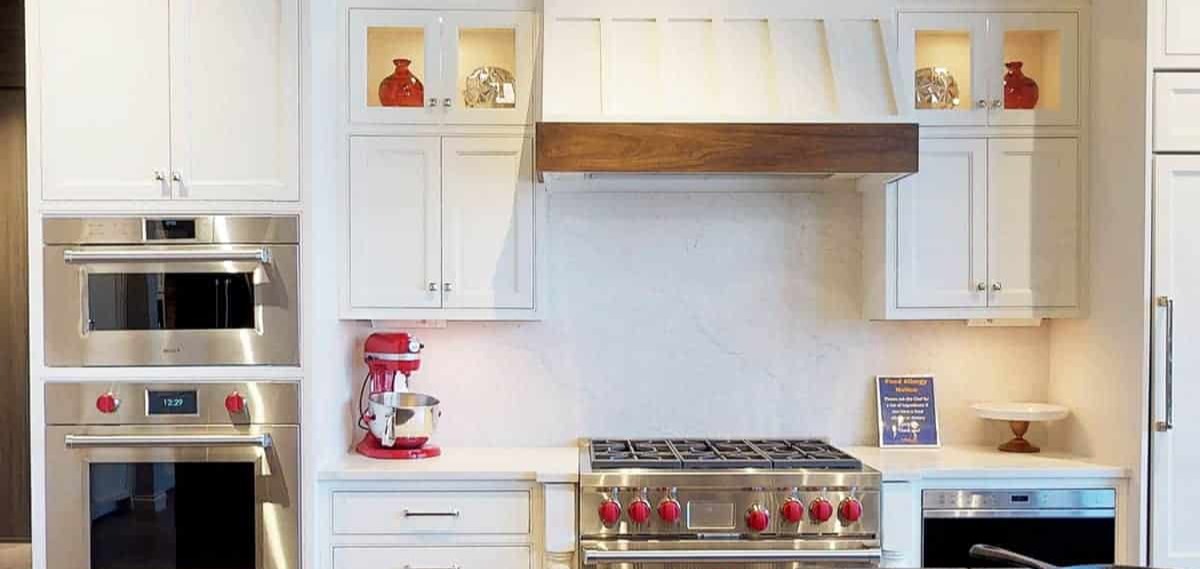
Another relic of the past?
Over-the-range microwaves.
These designs haven't changed much since 1989, and their ventilation capabilities are outdated.
Front burners today are far more powerful, but these microwave vents' CFM (cubic feet per minute) and limited capture area haven't kept up.
If you're still using one of these setups, you're not only dating your kitchen—you're also sacrificing proper ventilation.
Here's the bottom line: good ventilation isn't just about aesthetics but functionality.
Poorly vented kitchens trap odors, smoke, and pollutants, especially in today's energy-efficient homes, where airflow is more restricted.
Invest in the right ventilation solution if you want a kitchen that works well and feels fresh. Your future self will thank you.
Mark's 3rd Dated Design Mistake to Avoid: Avoid Over-the-Range Microwaves
Mark's third tip concerns a fixture that's long been a staple in many kitchens: the over-the-range (OTR) microwave.
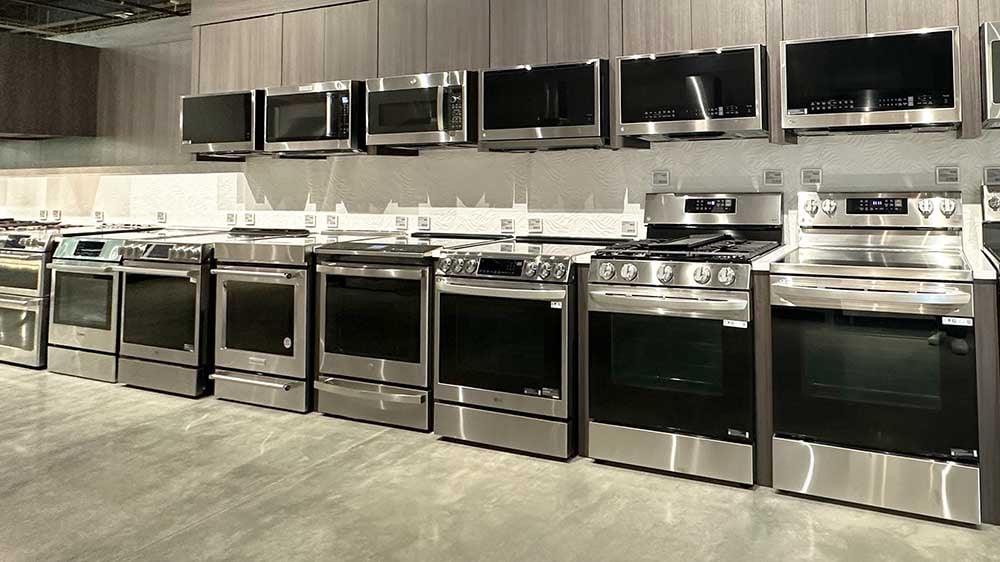
While common and space-saving, he believes it's time to rethink this combination for aesthetic and functional reasons.
"I always go on about the OTR," Mark admitted.
"I get into trouble with clients when they book calls with me. They're almost afraid to mention it, but it's fine if you have that.
There's no shame on you for doing that."
Despite their popularity, Mark sees the OTR microwave as a dated design choice that often detracts from a kitchen's overall look.
If you look at pictures of kitchens from the last ten or twenty years, you'll probably see more kitchens with OTRs than anything else.
They're just so abundant and so common. And I think they don't look very good. They're kind of an eyesore," he explained.
Beyond aesthetics, Mark criticized the functionality of OTR microwaves.
"You have two appliances that are kind of finicky.
One is going to break, and now you have a microwave without a vent - which is really bad - or a vent without a microwave, which is just annoying.
Then you've got to change the whole thing out. It's greasy and gross."
Mark also pointed out that OTR microwaves aren't even standard in other parts of the world.
"I have a UK friend who's like, 'This isn't even a thing in the UK. What are you guys even doing over there?'" he joked.
While Americans may be drawn to the space-saving, two-in-one appeal of OTR microwaves, Mark believes they're more of a compromise than a solution.

"If you don't have any other space and that's what you need to do, that's fine," he said. "By all means, get the thing vented—at least vent it outside properly. But I think that's a better solution if you can find another way."
Mark emphasized that the area above the range should be a focal point of the kitchen, not an afterthought.
"Take the three things I mentioned—crown molding, shaker doors, and an OTR microwave—together, and that's just a dated, run-of-the-mill kitchen," he explained.
"We both agree that the range and the cooking area should be a visual focal point. It's where all the action happens, and it should look special."
Instead of an OTR microwave, Mark recommends enhancing the space above the range with thoughtful design elements.
"Put in a colored range, a unique backsplash, or a custom wood hood. Make that area stand out," he suggested.
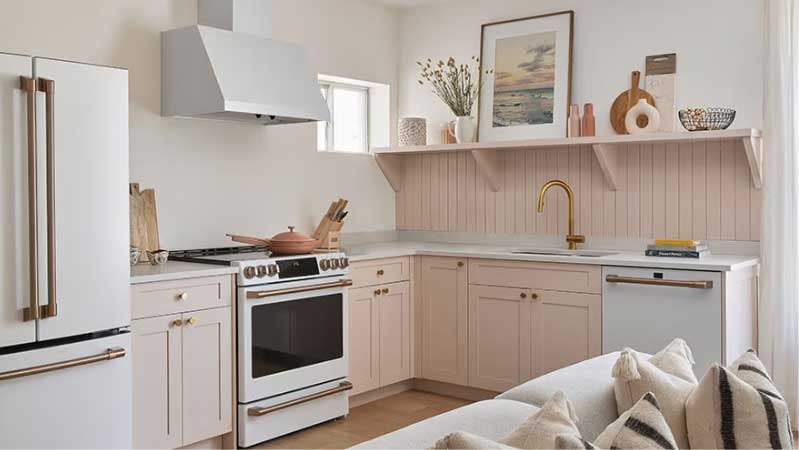
He also offered practical alternatives for the microwave. "You can always put a microwave on the countertop somewhere.
That's the safest place for it.
You don't need a monster microwave that's 30 inches wide. A smaller one will do the job, and it's easy to replace when it breaks."
While an OTR microwave might be better than nothing in a tight space, Mark doesn't believe "better than nothing" should ever be the standard for kitchen design.
He encourages homeowners to rethink this outdated fixture for a more modern, timeless kitchen.
My 3rd Dated Design Mistake to Avoid: Opt for a Specialty Wall Oven Instead of a Double Oven
Let's talk about double ovens.

They're a traditional choice for many kitchens, but my third tip is to think outside the box.
While double ovens were once considered a must-have in higher-end kitchens, today, there are better, more versatile options.
If you want to create a truly custom and functional kitchen, consider specialty ovens, such as steam or speed ovens.
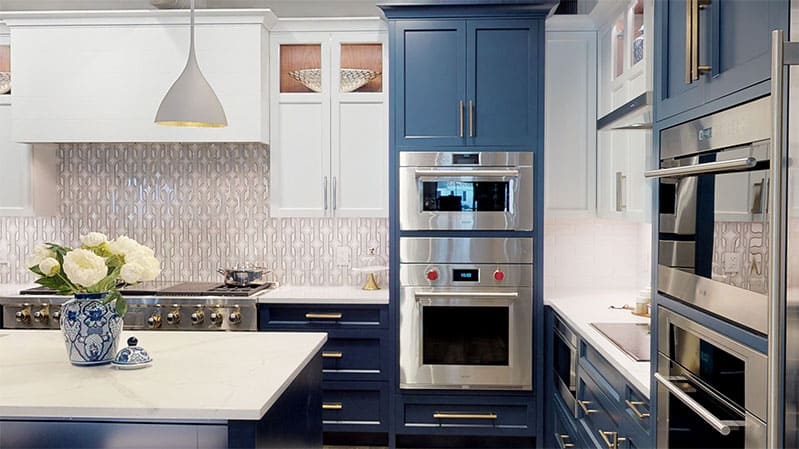
I'm a big fan of steam ovens.
I have a Wolf steam oven, and the newer models are so intuitive - they're practically foolproof.

You can reheat food with options like crispy, humid, or basic reheat at the press of a button.
Steam ovens also provide incredible results by adding moisture to food instead of targeting and drying it out like a microwave does.

The difference in flavor, especially for roasted meats, is phenomenal.
Plus, steam ovens offer speed settings that combine the efficiency of a microwave with the even cooking of a traditional oven.
More people are moving away from double ovens in favor of these specialty options, and for good reason.
In most homes, the bottom oven of a double setup rarely gets used.
In fact, when she left her apartment in Jamaica Plain, my mom still had the factory packing in the oven.
You can achieve better functionality and a more modern aesthetic by opting for a specialty oven.
Be Intentional with Your Design
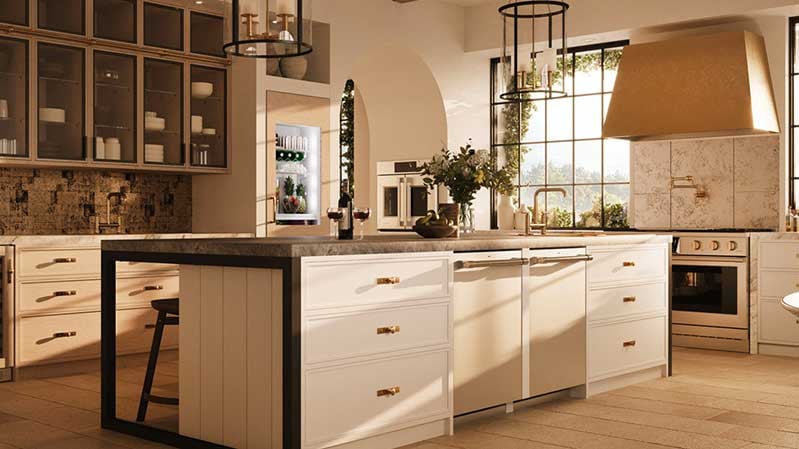
A great kitchen isn't just about following trends; it's about designing a space that truly works for you.
Whether it's your appliances, cabinets, or overall layout, every decision should reflect your needs and lifestyle.
As I often say, don't default to something just because it's what your mom, neighbors, or best friend had or have
Instead, ask yourself:
- How will I use this appliance?
- What are the pros and cons?
- Does this fit my cooking habits and family needs?
If a double oven fits your life perfectly, then go for it! But if you're adding it simply for tradition or perceived resale value, take a step back and reevaluate.

Specialty ovens or combinations of appliances may serve you better functionally and aesthetically.
Conclusion: Personalization Over Trends
A well-designed kitchen reflects you - not what's trendy or what someone else thinks you should have.
As Mark pointed out during our conversation, intentionality is key.
Instead of mimicking glossy influencer kitchens or trying to replicate someone else's design, focus on creating a space that suits your needs and style.
How you use your kitchen should be the foundation of every design decision.
Think critically about what works best for you, from vent placement to door styles to specialty ovens.
Check out Mark's channel for thoughtful tips and timeless design ideas for more inspiration.
By keeping personalization at the forefront, you can create a kitchen that's not only functional but also a true reflection of your unique tastes and lifestyle.
Additional Resources
Don't miss out on the secrets of the top appliance brands! Now, download your free Appliance Buying Guide and start making decisions like a pro. 🌟
- In-Depth Reliability Reviews: Discover what over 33,000 service calls reveal about appliance reliability. 🛠️
- Detailed Brand Analysis: Dive into our expert reviews of leading brands like SubZero, Wolf, La Cornue, Bosch, Thermador, and BlueStar. 📚
- Answers to Your Top Questions: Get the answers to the 10 most asked appliance questions by homeowners today. ❓
Click here to download your free guide. Over 1 million people have read a Yale Guide.
Related Articles:
Why Should You Trust Us?
It seems that every appliance review has nothing but glowing comments about almost every product, yet you read customer reviews and they are almost universally bad.
We are here to fill in the disconnect. We'll give you the best features, and the drawbacks as well, including reliability based on over 37,000 calls performed by our service team just last year. Our goal is to give you ALL the information so you know what's right for you.
Please consider subscribing or adding to the conversation in the comments below. We appreciate you stopping by.
Steve Sheinkopf is the third-generation CEO of Yale Appliance and a lifelong Bostonian. He has over 38 years of experience in the appliance industry, and he is a trusted source of information for consumers on how to buy and repair appliances.
Steve has also been featured in numerous publications, including the
New York Times,
Consumer Reports,
The Boston Globe,
Bloomberg Radio, the
New York Post,
The Wall Street Journal, and
Entrepreneur, for his knowledge of how to buy appliances and appliance repair.
Steve is passionate about helping consumers find the best appliances for their needs, and he is always happy to answer questions and provide advice. He is a valuable resource for consumers who are looking for information on appliance buying, repair, and maintenance.
Despite being the worst goalie in history, Steve is a fan of the Bruins and college hockey, loves to read, and is a Peloton biker. The love of his life is his daughter, Sophie.
A Note About Pricing
Pricing on this blog is for reference only and may include time sensitive rebates. We make every attempt to provide accurate pricing at time of publishing. Please call the stores for most accurate price.
Topics:


